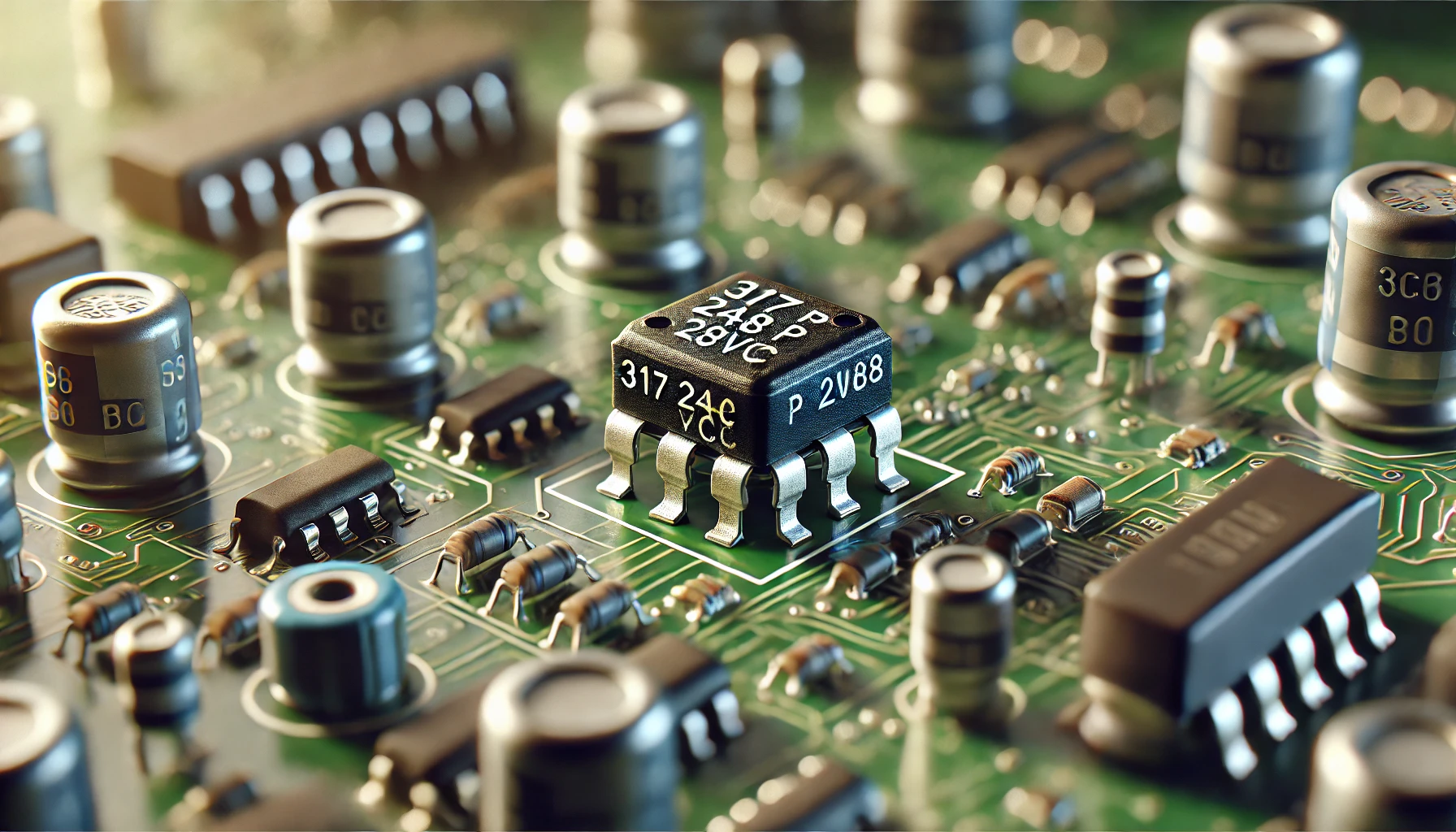Are you having trouble with your GC1723 tractor’s 3-point hitch not lifting? If so, you’re not alone! This common issue can be frustrating, especially when you’re in the middle of a critical task. Whether you’re an agricultural professional, a tractor enthusiast, or a farm owner, understanding why your gc1723 3 point won’t lift is essential for maintaining efficiency.
In this comprehensive guide, we’ll explore the various reasons behind the problem and provide practical solutions to get your equipment back in action. From hydraulic issues to mechanical faults, we cover it all, ensuring that you have the knowledge and confidence to troubleshoot and fix your tractor’s lifting mechanism.
Understanding Your GC1723 Tractor
The GC1723 tractor is known for its versatility and power. However, even the best machines can encounter problems. When the gc1723 3 point won’t lift, it disrupts your workflow and creates unnecessary stress. Knowing your tractor inside out helps you identify and resolve issues more efficiently.
These tractors are equipped with advanced hydraulics, precision control, and robust construction, but they are not immune to problems. Regular maintenance and a good understanding of the machine’s components are crucial. Familiarize yourself with your tractor’s manual, and always follow the manufacturer’s guidelines.
Understanding the specific needs and functions of your GC1723 will make troubleshooting easier when the gc1723 3 point won’t lift. You’ll be better prepared to pinpoint the issue and take corrective action without delay.
Common Causes of Lift Failure
When the gc1723 3 point won’t lift, several factors could be at play. Common causes include hydraulic fluid issues, mechanical problems, or even operator error. Identifying the root cause is the first step in fixing the problem and getting your tractor back to full functionality.
Hydraulic fluid is vital for the operation of the lifting mechanism. Low fluid levels, contamination, or the wrong type of fluid can hinder performance. Regular checks and proper maintenance are essential to avoid these issues. Always use the recommended fluid type and keep an eye on the levels.
Mechanical problems can also lead to lift failure. Worn-out components, broken parts, or loose connections can prevent the 3-point hitch from working correctly. Regular inspections and timely repairs can help keep your tractor in top condition, ensuring that the gc1723 3 point won’t lift becomes a rare occurrence.
Hydraulic Fluid Problems and Solutions
Hydraulic fluid problems are among the most common reasons why the gc1723 3 point won’t lift. Ensuring that the hydraulic system is in top shape is crucial for the proper functioning of the lifting mechanism. Low fluid levels, contamination, and using the wrong type of fluid can all contribute to lift failure.
Checking the hydraulic fluid level regularly is a simple yet effective way to prevent problems. If the fluid is low, top it up with the appropriate type. Contaminated fluid can be another issue. Dirt, water, or other contaminants can affect the system’s performance. Regularly change the fluid and use filters to keep it clean.
Using the correct hydraulic fluid is vital. Different tractors require different types of fluid, and using the wrong one can lead to problems. Always refer to your tractor’s manual and use the recommended fluid. By addressing these hydraulic fluid issues, you can ensure that the gc1723 3 point won’t lift becomes a thing of the past.
Mechanical Issues and Fixes
Mechanical issues can also cause the gc1723 3 point won’t lift problem. Worn-out parts, broken components, and loose connections are common culprits. Regular inspections and timely replacements can prevent these issues from disrupting your work.
Start by inspecting the lifting arms and linkage. Look for signs of wear or damage. If you find any, replace the affected parts. Loose connections can also hinder performance. Tighten any loose bolts or nuts to ensure that everything is secure.
Regular maintenance is key to preventing mechanical problems. Lubricate moving parts, check for wear and tear, and replace worn-out components as needed. By keeping your tractor in good condition, you can avoid the frustration of dealing with a gc1723 3 point won’t lift situation.
Electrical System Considerations
Sometimes, the gc1723 3 point won’t lift due to electrical issues. Faulty wiring, blown fuses, or malfunctioning switches can all affect the lifting mechanism. Understanding the electrical system and conducting regular checks can help you identify and fix these problems.
Start by checking the wiring. Look for any loose connections, frayed wires, or signs of damage. Repair or replace any faulty wiring to ensure that the electrical system is functioning correctly. Blown fuses can also cause issues. Check the fuses and replace any that are blown.
Malfunctioning switches can prevent the lift from working. Test the switches to ensure that they are working correctly. If you find any problems, replace the faulty switches. By addressing these electrical issues, you can ensure that the gc1723 3 point won’t lift becomes a rare occurrence.
Inspecting and Adjusting the Linkage
The linkage plays a crucial role in the operation of the 3-point hitch. If the gc1723 3 point won’t lift, the problem might lie in the linkage. Regular inspection and proper adjustment can prevent and fix these issues, ensuring smooth operation.
Start by inspecting the linkage for any signs of wear or damage. Look for bent or broken parts and replace them if necessary. Loose connections can also cause problems. Tighten any loose bolts or nuts to ensure that the linkage is secure.
Adjusting the linkage is essential for proper operation. Follow the manufacturer’s guidelines for adjusting the linkage. Proper adjustment ensures that the lifting mechanism works smoothly and efficiently. By keeping the linkage in good condition, you can avoid the frustration of dealing with a gc1723 3 point won’t lift situation.

Addressing Operator Error
Sometimes, the gc1723 3 point won’t lift due to operator error. Understanding how to operate the tractor correctly and following the manufacturer’s guidelines can prevent these issues. Proper training and regular practice are essential for efficient operation.
Start by familiarizing yourself with the tractor’s manual. Understand the controls and follow the recommended procedures for operating the 3-point hitch. Avoid overloading the hitch, as this can prevent it from lifting. Follow the manufacturer’s guidelines for the maximum weight capacity.
Regular practice is essential for efficient operation. Spend time operating the tractor and using the 3-point hitch. Familiarity with the controls and procedures can prevent operator error and ensure that the gc1723 3 point won’t lift becomes a rare occurrence.
Regular Maintenance and Preventive Measures
Preventing the gc1723 3 point won’t lift problem requires regular maintenance and preventive measures. Keeping your tractor in good condition ensures smooth operation and prevents unexpected issues. Follow the manufacturer’s guidelines for maintenance and conduct regular inspections.
Start by performing regular checks on the hydraulic system. Ensure that the fluid levels are adequate and that the fluid is clean. Regularly change the fluid and filters to keep the system in top shape. Inspect the mechanical components for signs of wear and replace any worn-out parts.
Regular maintenance also includes checking the electrical system and linkage. Ensure that the wiring is in good condition and that the linkage is properly adjusted. By following these preventive measures, you can ensure that the gc1723 3 point won’t lift becomes a rare occurrence.
Troubleshooting Tips and Tricks
When the gc1723 3 point won’t lift, troubleshooting can help you identify and fix the problem quickly. Understanding common issues and knowing how to address them can save you time and effort. Here are some tips and tricks for troubleshooting the lifting mechanism.
Start by checking the hydraulic fluid. Ensure that the fluid levels are adequate and that the fluid is clean. Inspect the mechanical components for signs of wear or damage. Tighten any loose connections and replace any worn-out parts.
Check the electrical system for any faulty wiring, blown fuses, or malfunctioning switches. Repair or replace any faulty components. Follow the manufacturer’s guidelines for adjusting the linkage and ensure that it is properly adjusted. By using these troubleshooting tips, you can quickly resolve the gc1723 3 point won’t lift problem.

Consulting a Professional Mechanic
If you’ve tried everything and the gc1723 3 point won’t lift, it might be time to consult a professional mechanic. Sometimes, the problem requires expert knowledge and specialized tools. A professional mechanic can diagnose and fix the issue, ensuring that your tractor is back in action.
Start by finding a reputable mechanic who specializes in tractors. Look for reviews and ask for recommendations from other farm owners or agricultural professionals. Explain the problem and provide as much information as possible. A professional mechanic can conduct a thorough inspection and identify the root cause of the problem.
Regularly consulting a professional mechanic for maintenance and repairs can prevent future issues. By relying on expert knowledge, you can ensure that the gc1723 3 point won’t lift becomes a rare occurrence.
The Importance of Proper Training
Proper training is essential for preventing the gc1723 3 point won’t lift problem. Understanding how to operate the tractor correctly and following the manufacturer’s guidelines can prevent operator error and ensure efficient operation. Invest in training for yourself and your employees.
Start by familiarizing yourself with the tractor’s manual. Understand the controls and follow the recommended procedures for operating the 3-point hitch. Avoid overloading the hitch and follow the manufacturer’s guidelines for the maximum weight capacity.
Invest in training programs for yourself and your employees. Regular practice and proper training can prevent operator error and ensure that the gc1723 3 point won’t lift becomes a rare occurrence.
Upgrading Your Equipment
Sometimes, the gc1723 3 point won’t lift problem requires upgrading your equipment. Newer models and advanced technology can improve performance and prevent issues. Consider upgrading your tractor or investing in new components to ensure smooth operation.
Start by researching newer models and advanced technology. Look for tractors with improved hydraulic systems, advanced control features, and robust construction. Consider investing in new components, such as hydraulic pumps or lifting arms, to improve performance.
Upgrading your equipment can prevent future issues and ensure efficient operation. By investing in new technology, you can ensure that the gc1723 3 point won’t lift becomes a rare occurrence.
Conclusion
Understanding why the gc1723 3 point won’t lift and knowing how to fix it is essential for maintaining efficiency and productivity. From hydraulic fluid problems to mechanical issues, this comprehensive guide covers all the common causes and provides practical solutions. Regular maintenance, proper training, and consulting a professional mechanic can prevent future issues. By following these tips and tricks, you can ensure that your tractor is back in action and ready for any task.
If you need further assistance or want to explore more about maintaining your tractor, consider consulting a professional mechanic or investing in training programs. Your tractor is a valuable asset, and taking care of it ensures smooth operation and long-term productivity.
Remember, understanding your equipment and conducting regular maintenance can prevent issues and keep your tractor in top shape. By following these guidelines, you can ensure that the gc1723 3 point won’t lift becomes a rare occurrence and that your farm remains productive and efficient.












